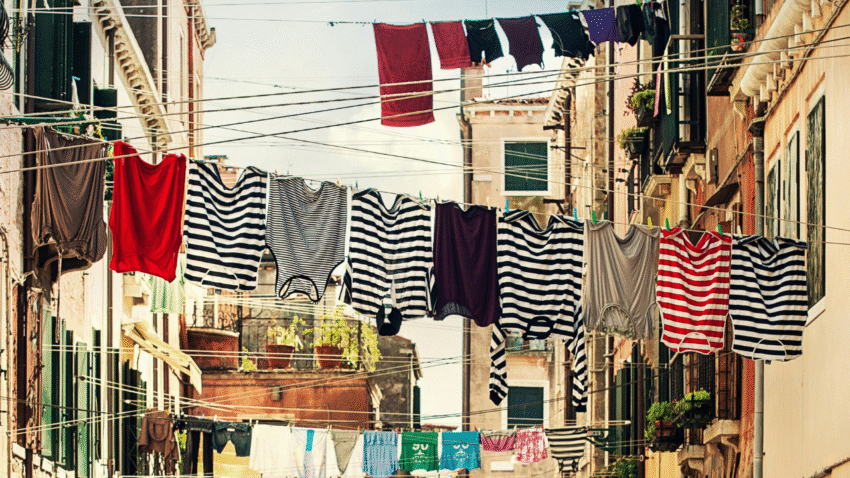Introduction
Tired of lugging baskets of dirty clothes down the stairs? A laundry chute is a simple but highly effective way to transport laundry from one floor to another quickly and efficiently. Learning how to add a laundry chute to your home can save time, reduce clutter, and make laundry day easier.
Whether you live in a multi-story house or a split-level home, installing a laundry chute is a functional upgrade that can also add value to your property.
Why Install a Laundry Chute?
Adding a laundry chute offers several benefits:
- Convenience – Instantly send clothes to the laundry area without carrying heavy loads.
- Time-saving – Reduces trips up and down stairs.
- Decluttered floors – Keeps dirty laundry contained instead of scattered around the house.
- Increased home value – A practical feature many homebuyers appreciate.
Step-by-Step Guide to Adding a Laundry Chute
1. Plan the Location
What to do:
- Choose a spot directly above or near your laundry area.
- Common locations include hallways, bathrooms, or bedroom closets.
- Ensure the location is clear of pipes, wiring, or structural beams.
Why it works:
A well-placed chute ensures laundry drops directly into a hamper or basket in the laundry room without complex routing.
2. Check Building Codes and Permissions
What to do:
- Consult your local building authority to see if a permit is required.
- Follow fire safety guidelines—some areas require self-closing chute doors or fire-rated materials.
Why it works:
Compliance with local codes keeps the installation safe and legal.
3. Choose the Chute Material
Options:
- Metal (stainless steel or galvanized) – Durable, smooth, and easy to clean.
- PVC or plastic – Lightweight and affordable for smaller chutes.
- Wood lined with smooth material – A budget-friendly DIY option.
Why it works:
Smooth materials prevent clothes from snagging and reduce lint buildup.
4. Gather Tools and Materials
You’ll need:
- Measuring tape
- Stud finder
- Saw (reciprocating or drywall saw)
- Chute kit or building materials
- Screws and brackets
- Level
- Safety goggles and gloves
- Self-closing chute door (if required)
Why it works:
Having everything ready ensures the installation goes smoothly from start to finish.
5. Mark and Cut the Opening
What to do:
- Use a stud finder to locate a space between wall studs.
- Mark the desired chute opening size (usually 10–14 inches wide).
- Carefully cut the opening in the wall or floor, wearing safety gear.
Why it works:
A precise opening makes for a better fit and easier installation.
6. Build or Install the Chute
What to do:
- If using a kit, follow manufacturer instructions to connect chute sections.
- If building your own, create a smooth, angled path for clothes to slide down.
- Secure the chute inside the wall or cabinet using brackets.
Why it works:
A secure, smooth chute ensures clothes travel efficiently to the laundry area.
7. Install the Chute Door
What to do:
- Mount the chute door at the top opening for easy access.
- Use a self-closing door if required by code for fire safety.
- Make sure the door opens and closes smoothly.
Why it works:
A door keeps laundry contained, improves safety, and maintains the room’s appearance.
8. Create a Landing Zone in the Laundry Room
What to do:
- Place a laundry basket or hamper directly beneath the chute.
- Consider adding a small shelf or frame to hold the basket in place.
- Line the area with rubber mats to reduce noise when clothes drop.
Why it works:
A designated landing area keeps laundry organized and prevents damage to the floor or clothes.
9. Test the Chute
What to do:
- Drop a few lightweight items to check for smooth travel.
- Adjust the chute’s angle or landing basket position if needed.
Why it works:
Testing ensures the chute is functional before regular use.
10. Maintain the Chute
What to do:
- Wipe the interior with a damp cloth every few months to prevent lint buildup.
- Check for loose brackets or any damage to the chute walls.
Why it works:
Regular maintenance keeps the chute safe, clean, and efficient.
Common Mistakes to Avoid
Mistake 1: Choosing the Wrong Location
Solution: Plan carefully to avoid pipes, wiring, or blocked paths.
Mistake 2: Skipping the Slope
Solution: Install the chute at a slight angle to help clothes slide down easily.
Mistake 3: Using Rough Materials
Solution: Always choose smooth materials to prevent snags and lint buildup.
Mistake 4: Ignoring Safety Codes
Solution: Follow all local fire and building codes for installation.
Mistake 5: Forgetting a Landing Basket
Solution: Always have a container to catch clothes at the bottom.
Extra Laundry Tips & Hacks
- Install soundproof insulation around the chute to minimize noise.
- Use decorative chute doors that match your home’s interior style.
- Label the chute door so guests know its purpose.
- Related guide: Check out our article on “How to Keep a Laundry Room Clutter-Free All Year” to keep your landing zone organized.
Conclusion
Adding a laundry chute to your home is a practical and convenient upgrade that makes laundry day easier and more efficient. With careful planning, proper installation, and regular maintenance, you can enjoy the benefits of a quick, clutter-free way to transport laundry from one floor to another.
Bonus Tip: Consider adding multiple chute openings—one in a hallway and another in a master closet—for even more convenience.
Bookmark this guide so you can start planning your own laundry chute installation today.
